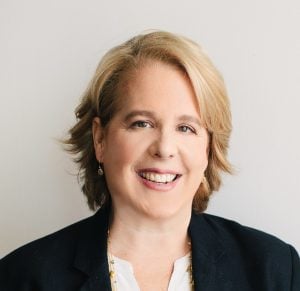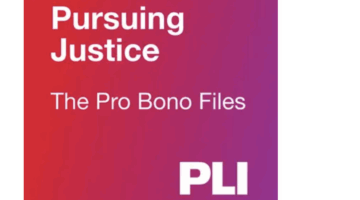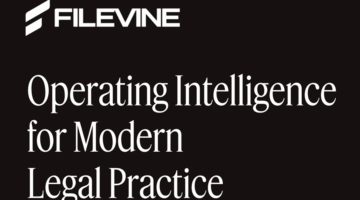
Ed. note: The Rainmaker is a new Above the Law series highlighting attorneys who have built distinguished practices by excelling not only in the courtroom and at the negotiating table, but also in business development, mentorship, and leadership. Each installment will feature candid reflections on what it takes to succeed as a rainmaker in today’s legal industry. Today’s featured rainmaker is Roberta Kaplan.
As a young associate in what my son likes to call “the last Century,” every time I would walk into a courtroom with the great litigator (and one of my mentors) Marty London, the presiding judge would ask Marty a bunch of questions about his boat and how the fishing had been lately. (Marty was an avid deep-sea fisherman.) I have to admit that it seemed kind of unfair to me at the time – I didn’t think that any judge would ever know me well enough to greet me with those kinds of questions.
Back then, a “rainmaker” brought to mind images of smoke-filled men’s clubs, leather lounge chairs at cigar or whiskey bars, front row seats to the Super Bowl, and every single golf course on the planet. True confessions: Even the smell of Scotch gives me a migraine. The one time I tried to smoke a cigar (on a big case in Tokyo) was very unpleasant. My father has spent years obsessing about golf so I’ll do anything to avoid it. And I obviously can’t join a men’s club.

Pursuing The Pro Bono Story: A Conversation With Alicia Aiken
This Pro Bono Week, get inspired to give back with PLI’s Pursuing Justice: The Pro Bono Files, a one-of-a-kind podcast hosted by Alicia Aiken.
While much has changed since my time as a junior associate, much has stayed the same, especially today, when the word “diversity” is now perceived by many as provocative. The reality is that there are still far fewer venues for women attorneys to network and build their books of business as compared to men, who still dominate law firm partnerships and general counsel offices. As with many things for women, becoming a successful “rainmaker” requires thinking creatively about finding your own path.
In 2013, I had the honor to argue United States v. Windsor before the United States Supreme Court. Not only was Windsor the case that broke open my career, it also may have been the one that involved the most creativity. One of the things that was unusual about Windsor in connection with rainmaking is that it was a pro bono matter. It’s hardly the norm to build your book of business by doing public interest cases pro bono. But it was definitely more rewarding than playing endless rounds of golf.
To be clear, I was not a member of the established SCOTUS bar. I didn’t work for the Solicitor General’s office. And I never clerked for the Supreme Court. I was just Robbie, a Jewish girl from Cleveland who worked her tush off to get into Harvard College and Columbia Law School, and then worked even harder to become a litigation partner at Paul, Weiss. It was as astonishing to me as it was to everyone else at the time that I was the person who would be standing before the Supreme Court arguing Windsor. If you had told me back when I was Marty’s junior associate that that would happen, I would have told you that you needed to get more sleep.
So how did I get a winning case to the Supreme Court in the first place? The key to our success in Windsor was to take the abstract question of marriage equality off the table. Most LGBTQ civil rights cases that had been brought up to that point had gone broad, using a large number of lesbian and gay couples of different ages, races, backgrounds, with and without children, who were married in every sense of the word but the legal one. That was certainly understandable – the point was to show the broad diversity of lesbians and gay men who were negatively impacted by their inability to marry. In fact, that was the strategy that I myself had used when we lost the state court case for marriage equality in New York in 2006.

How Filevine Helps In-House Legal Teams Manage Every Matter With Confidence
AI powers tools for data intake, document management, and drafting contracts.
In Windsor, we decided to take the opposite approach. Rather than have multiple plaintiffs presenting a wide variety of different statutes and factual scenarios, we had only one. In other words, we deliberately narrowed our case to focus on one couple (Edie and Thea) who had been together for decades when Thea died and Edie was forced to pay a huge inheritance tax because their marriage wasn’t recognized under federal law. We thought that while the Justices weren’t ready to rule that gay and lesbian couples had the constitutional right to marry, a majority might agree that the federal government could not discriminate against an already married lesbian couple when it came to taxes.
It worked. We won Windsor because of DOMA’s discriminatory impact on the federal inheritance tax. A scintillating area of tax law? No. But creative? Very. In fact, my current client, the writer and journalist E. Jean Carroll, has compared the Windsor case to the Boston Tea Party: a local fight over paying taxes that ultimately led to revolutionary advances for the whole country.
I would never describe myself as “creative” in the conventional sense of the word. I have no artistic talent. I can’t draw anything recognizable. I sing so far out of key that my son can’t stand to be in the car with me when a Chappell Roan song comes on. (Believe it or not, I recently dressed up as Chappell Roan for a Halloween party hosted by one of our clients). My high school art teacher once claimed that every piece of pottery I made somehow turned out to look like a hookah. When I argued that that was not my intent, his response was that I should never take another art class again, but that I probably would make a good lawyer. He was right on both counts. Not only did I never take another art class, but in the law, I found an outlet for my own unique form of creativity. It may look easy, but it actually takes a lot of creativity to come up with ways to describe complex facts and ideas in ways that a judge or jury will find most persuasive.
After many years in Biglaw and with the Windsor decision behind me, I decided to repeat our strategy in Windsor – rather than going big, it was time to go small. It seemed to me that it was becoming increasingly difficult to have a cutting-edge litigation practice at a big firm — clients were growing concerned about what litigators were doing not just for them, but for other clients as well.
Just months after leaving Paul, Weiss, when I came up with the crazy, albeit creative idea of using the KKK Act of 1871 to sue more than a dozen white nationalists who planned for the violence that occurred at the Unite the Right rally in Charlottesville, I knew that the costs in terms of e-discovery and security alone were going to be astronomical. At large firms, pro bono cases are largely funded by paying cases. If a small firm’s attorneys are only working on pro bono cases, that can make it hard to pay salaries. Unfortunately, the righteousness of the cause won’t pay the rent.
So we decided to get creative. Inspired by what Chad Griffin had done in establishing the non-profit advocacy group the American Foundation for Equal Rights to support David Boies’ and Ted Olson’s California’s Prop 8 litigation (argued at the Supreme Court the day before Windsor), we decided to establish a non-profit group to raise money for our expenses.
Being a smaller firm means that you don’t have the luxury of just throwing bodies at a problem; you’re forced to solve it in the most efficient and creative way possible. Not enough partners to handle all the witnesses in a four-week jury trial? No problem – hire the most talented associates and give them the opportunity to put witnesses on the stand themselves. (In Charlottesville, I had two different junior colleagues put on and cross examine some of the most important witnesses in the case.)
While our firm, Kaplan Martin, is small by design, we punch far above our weight in large part because we love what we do. We practice at the same level as Biglaw — we still sweat every detail because that is the only way to win. We just do it with fewer people and more creativity.
And although we are committed to being generalists, we do have one specialty — we like to take on bullies. We’ve twice beaten the biggest bully in the world in jury trials for E. Jean Carroll and in the dispute over congestion pricing for the MTA. Sadly, since there seem to be a lot more bullies with a lot more power in the world today, when potential clients see us willing to go up against the likes of Donald Trump or the neo-Nazis in Charlottesville, they know that we won’t be afraid to take on the toughest fights for them.
The law is not for everyone and practicing law the way I do (obsessively) isn’t either. I can’t think of anything that gives me a greater sense of satisfaction than writing a brief, arguing in court, or trying a case – except maybe fly fishing when the trout are biting. If you love what you do, you’ll never be bored. Surround yourself with colleagues who you respect and trust, who love to litigate, and with whom you can come up with the most creative ways to win. At least in my opinion, that’s not a bad way to pass the time, beat bullies, and become a “rainmaker.”
Described by The Washington Post as “a brash and original strategist, with neither a gift for patience nor silence, a crusader for underdogs who has won almost every legal accolade imaginable,” Robbie Kaplan is a renowned and celebrated litigator and co-founder of Kaplan Martin LLP. Robbie began her legal career at Paul, Weiss, where she catapulted herself to partner in just seven years. Along with securing federal recognition of same-sex marriage through the historic Supreme Court case United States v. Windsor and defeating the neo-Nazis in Charlottesville, Robbie also has defeated President Trump twice in trials on behalf of her client E. Jean Carroll and represents the New York City Metropolitan Transportation Authority in its matters related to congestion pricing. Robbie is a long-time lecturer at Columbia University Law School and has won, among many other awards, the Lifetime Achievement Award from the New York Law Journal and Most Innovative Lawyer of the Year from the Financial Times.